256. Evidently the Head of the Serpent
Holder (Ras Alhague, α Ophiuchi), and
also the Wolf
(ω Draconis), were (ideally) at the Full Moon
240 nights from the beginning of side b on
the C tablet, i.e. in night number 240
beyond Polaris (*26):
|
6
Febr (365 + 37) |
7 |
8
(404) |
9
(40) |
 |
 |
 |
 |
|
Cb10-9 (631) |
Cb10-10 → 100 |
Cb10-11 |
Cb10-12 (242 = 40 + 202) |
|
ka hahaś
hia
- ko
te rima kua oho |
ku hahaś - kua ka
te ahi i ruga |
e te hau e |
ka oho te kihikihi
o te henua |
|
PYRAMID OF KHUFU
MINTAKA (Belt) = δ Orionis,
υ Orionis (82.4), χ Aurigae (82.5),
ε Columbae (82.6) |
PYRAMID OF KHAFRE
Al Hak'ah-3 (White Spot) /
Mrigashīrsha-5 (Stag's Head) /
Turtle Head-20 (Monkey) /
Mas-tab-ba-tur-tur (Little Twins)
ARNEB = α Leporis, Crab Nebula = M1
Tauri
(83.0,
φ¹ Orionis
(83.1),
HEKA = λ Orionis,
Orion Nebula = M42
(83.2),
HATYSA = ι Orionis
(83.5),
φ² Orionis
(83.6),
ALNILAM (String of Pearls) =
ε
Orionis
(83.7) |
PYRAMID OF MENKAURE
Three Stars-21 (Gibbon) /
Shur-narkabti-sha-shūtū-6 (Star in
the Bull towards the south) /
ANA-IVA-9 (Pillar of exit)
HEAVENLY GATE = ζ Tauri,
ν
Columbae (84.0),
ω
Orionis
(84.2),
ALNITAK (Girdle) =
ζ
Orionis,
PHAKT (Phaet) = α Columbae
(84.7) |
ο Aurigae (85.8), γ Leporis (85.9)
YANG MUN (α Lupi) |
|
June 11 |
12
(403 - 240) |
13
(164 = 84 + 80) |
14 |
|
Al Shaula-17
ALWAID (Mother Camels) = β Draconis,
MAASYM (Wrist) = λ Herculis
(265.1),
SHAULA (Sting) = λ Scorpii
(265.3),
KUMA = ν Draconis
(265.6),
σ
Arae (265.9)
HAMAL (α
Arietis) |
RAS ALHAGUE = α Ophiuchi
(266.1),
SARGAS = θ Scorpii (266.3), μ
Ophiuchi, π Arae (266.5),
NAN HAE
(Southern Sea) = ξ Serpentis
(266.6), AL
DHĪLI (The Wolf) = ω Draconis,
ι Herculis (266.7) |
λ Arae (267.1),
GIRTAB
(Seizer) = κ Scorpii, ο
Serpentis (267.6),
DSIBAN
(Wolf Pair)
= ψ Draconis
(267.9) |
KELB ALRAI (Dog of the Shepherd) =
β Ophiuchi,
μ
Arae (268.1),
KEW HO
(Nine
Rivers) =
μ Herculis
(268.6),
η
Pavonis (268.7),
APOLLYON
= ι Scorpii
(268.9) |
|
Dec 11 (345 = 84 + 261) |
12 (*26 + *240) |
13 |
14 |
|
... On February 9 the
Chorti Ah K'in,
'diviners', begin the
agricultural year. Both
the 260-day cycle and
the solar year are used
in setting dates for
religious and
agricultural ceremonies,
especially when those
rituals fall at the same
time in both calendars.
The ceremony begins when
the diviners go to a
sacred spring where they
choose five stones with
the proper shape and
color. These stones will
mark the five positions
of the sacred cosmogram
created by the ritual.
When the stones are
brought back to the
ceremonial house, two
diviners start the
ritual by placing the
stones on a table in a
careful pattern that
reproduces the schematic
of the universe. At the
same time, helpers under
the table replace last
year's diagram with the
new one. They believe
that by placing the
cosmic diagram under the
base of God at the
center of the world they
demonstrate that God
dominates the universe.
The priests place the
stones in a very
particular order. First
the stone that
corresponds to the sun
in the eastern, sunrise
position of summer
solstice is set down;
then the stone
corresponding to the
western, sunset position
of the same solstice.
This is followed by
stones representing the
western, sunset position
of the winter solstice,
then its eastern,
sunrise position.
Together these four
stones form a square.
They sit at the four
corners of the square
just as we saw in the
Creation story from the
Classic period and in
the Popol Vuh. Finally,
the center stone is
placed to form the
ancient five-point sign
modern researchers
called the quincunx ...
|
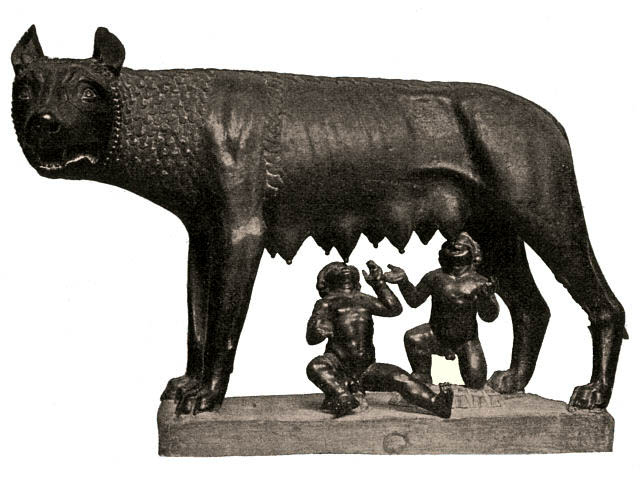 |
And the distance from the upside
down Head of Hercules (Ras Algethi,*260) to
the Head of the Serpent Holder was 6 days.
|
29 Jan |
30 |
31 |
1 Febr (32) |
|
... Among the other ritual
coincidences, perhaps the
most remarkable was the
death of poor old Willie
Watman, seaman A. B., on the
morning of 1 February.
Watman was the first person
among Cook's people to die
at Kealakekua: on the
ceremonial day, so far as
can be calculated, that the
King's living god Kahoali'i
would swallow the eye of the
first human sacrifice of the
New Year. And it was the
Hawaiian chief - or by one
account, the King himself -
who specifically requested
that old Watman be buried at
Hikiau temple. |
 |
 |
 |
 |
|
Cb10-1 (392 + 6 + 225 ) |
Cb10-2 (624) |
Cb10-3 (233 = 625 - 392) |
Cb10-4 |
|
Ku hakaraoa
- te inoino |
hakarava |
te inoino |
ku hakaraoa |
|
Raoa.
Pau.: To choke on a
fishbone. Mgv.:
roa, a bone
stuck in the throat.
Ta.: raoa, to
choke on a bone.
Sa.: laoa, to
have something
lodged in the
throat. Ma.: raoa,
to be choked.
Churchill. |
|
|
ALMAAZ (He Goat) = ε Aurigae
(74.7),
HAEDUS I = ζ Aurigae
(74.8) |
HAEDUS II = η Aurigae
(75.9) |
5h (76.1)
ε Leporis (76.0),
CURSA = β Eridani
(76.4), λ Eridani (76.7) |
μ Aurigae, μ Leporis (77.6) |
|
June 3 (154) |
4 |
5 |
6 (*77) |
|
no star listed (257) |
17h (258.7)
ARRAKIS = μ Draconis
(258.7) |
Mula-19 (The Root)
SABIK (The Preceding One) =
η Ophiuchi (259.7), η
Scorpii (259.9) |
NODUS
I = ζ Draconis
(260.0), π Herculis (260.7),
RAS ALGETHI
(Head of the Giant)
= α Herculis
(260.8) |
|
Dec 3 (337) |
4 |
5 |
6 (*260) |
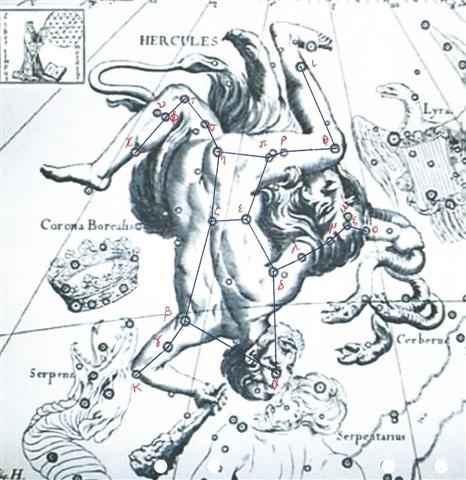
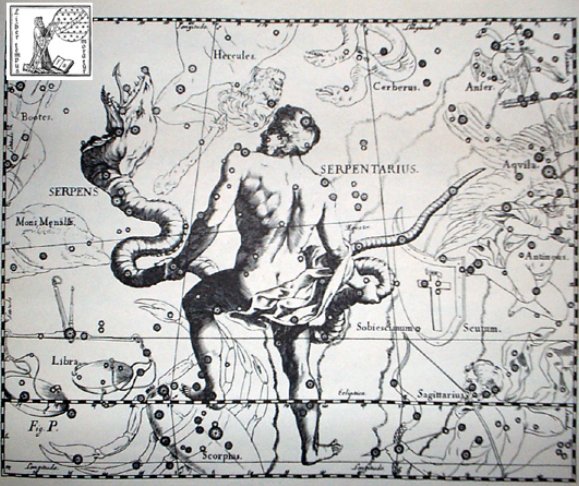
The Serpent Holder
(the Lord of the Lake) succeeded
Hercules (the Stag).
... Gronw Pebyr, who figures as the
lord of Penllyn - 'Lord of the Lake'
- which was also the title of Tegid
Voel, Cerridwen's husband, is really
Llew's twin and tanist ...
Gronw
reigns during the second half of the
year, after Llew's sacrificial
murder; and the weary stag whom he
kills and flays outside Llew's
castle stands for Llew himself (a
'stag of seven fights'). This
constant shift in symbolic values
makes the allegory difficult for the
prose-minded reader to follow, but
to the poet who remembers the fate
of the pastoral Hercules the sense
is clear: after despatching Llew
with the dart hurled at him from
Bryn Kyvergyr, Gronw flays him, cuts
him to pieces and distributes the
pieces among his merry-men. The clue
is given in the phrase 'baiting his
dogs'. Math had similarly made a
stag of his rival Gilvaethwy,
earlier in the story.
It seems
likely that Llew's mediaeval
successor, Red Robin Hood, was also
once worshipped as a stag. His
presence at the Abbot's Bromley Horn
Dance would be difficult to account
for otherwise, and 'stag's horn'
moss is sometimes called 'Robin
Hood's Hatband'. In May, the stag
puts on his red summer coat.
Llew visits the Castle of Arianrhod
[Corona Borealis] in a coracle of
weed and sedge. The coracle is the
same old harvest basket in which
nearly every antique Sun-god makes
his New Year voyage; and the virgin
princess, his mother, is always
waiting to greet him on the bank ...
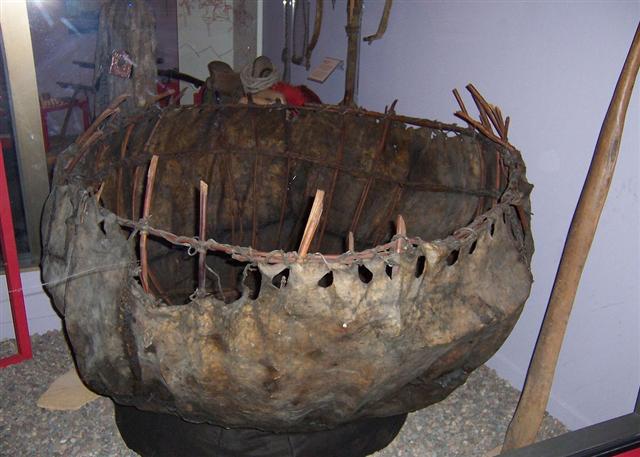
... In other words, the ancient
Druidic religion based on the
oak-cult will be swept away by
Christianity and the door - the god
Llyr [Llew] - will languish
forgotten in the Castle of
Arianrhod, the Corona Borealis.
This helps us to understand the
relationship at Rome of Janus and
the White Goddess Cardea who is ...
the Goddess of Hinges who came to
Rome from Alba Longa. She was the
hinge on which the year swung - the
ancient Latin, not the Etruscan year
- and her importance as such is
recorded in the Latin adjective
cardinalis - as we say in
English 'of cardinal importance -
which was also applied to the four
main winds; for winds were
considered as under the sole
direction of the Great Goddess until
Classical times
...
There were 4 main
winds (matagi) and in the G text we can find
a quartet of special glyphs
resembling the triplet around Ras
Alhague:
|
21 + 22 + 23 + 24 = 90 |
 |
 |
 |
 |
|
Gb6-21 (174) |
Gb6-22 (404) |
Gb6-23 |
Gb6-24 (229 + 6 * 29½) |
|
12 +
14
(?)
= 26 |
15 + 16 (?) =
31 |
|
6
Febr (365 + 37) |
7 |
8
(404) |
9
(40) |
|
9 + 10 + 11 + 12 = 42 |
 |
 |
 |
 |
|
Cb10-9 (631) |
Cb10-10 → 100 |
Cb10-11 |
Cb10-12 (242) |
|
14 +
14 + 11 = 39 |
7 + 5 =
12 |
|
26 + 31 + 39 + 12 = 108 (?) |
In my efforts to
understand the structure of the G
tablet I had tentatively concluded that the
right ascension days at the time of
rongorongo probably were beginning at Rogo
in Gb6-26 (408) when the Sun
reached the Navel (the birthplace)
of the (Sun) Horse (viz. Sirrah)
together with
the Hand (Caph) of her mother in
Cassiopeia - at the time when the Full Moon
was at
the Tail (the end) of the Horse and
the Beak (the beginning) of Black Raven:
But counting forward and ahead past the end
of side b, and then all the way to
glyph 400 (Gb6-18) implied there
could not be a continuity from
Sirius rising heliacally in June
30 at Gb6-20 (with the Full Moon
at the South Dipper) to 0h at
heliacal Sirrah 7 glyphs later.
The glyph circuit was 365< 471 <
2* 365:
|
63 |
zero |
229 |
169 |
 |
 |
 |
 |
6 |
|
Gb6-17 (229 + 170) |
Gb6-18 → 108 |
Gb6-19 |
Gb6-20 (402) |
|
no star listed (98) |
ν Puppis (99.2), ψ3
Aurigae (99.4), ψ2
Aurigae (99.5)
GEMMA
(α Cor. Bor.) |
ψ4 Aurigae (100.5),
MEBSUTA (Outstretched)
= ε Gemini
(100.7) |
SIRIUS
= α Canis Majoris
(101.2), ψ5 Aurigae
(101.4), ν Gemini
(101.6), ψ6 Aurigae
(101.7) |
|
June 27 |
28 |
29 (180) |
30 (*107 - *6) |
|
Abhijit-22 (Victorious)
θ Cor. Austr. (281.0),
VEGA
= α Lyrae (281.8) |
no star listed (282) |
ζ Pavonis (283.4), λ
Cor. Austr. (283.6), DOUBLE
DOUBLE = ε Lyrae (283.7),
ζ Lyrae (283.8) |
South Dipper-8 (Unicorn)
Φ SAGITTARII
(284.0), μ Cor. Austr.
(284.6), η Cor. Austr.,
θ Pavonis (284.8) |
|
64 |
398 |
Dec 27 (361) |
28 |
29 |
30 (*290 - *6) |
|
462 = 542 - 80 |
463 |
542 - 70
- 8 |
465 |
466 = 64 + 402 |
|
472 (= 1½ * 314 + 1) = 8 * 59 (= 413 + 2
* 29½) = 408 + 64 |
|
...
Easter Island (te
pito o te kainga) is
the last of all known
islands. Seven lands lie
before it, but these do
not recommend themselves
for settlement. Easter
Island is the 'eighth
land' (te varu kainga).
Actually, we are dealing
here with a figure of
speech because 'seven'
and 'eight' used as
qualifying quantities
play a traditional role
in Oceania (Barthel
1962a). While the number
seven is known as a
topos in MQS., HAW., and
MAO., the topos of the
number eight goes far
beyond eastern Polynesia
(MQS., HAW., TAH.). In
TON., the number eight
is 'a conventional term
signifying many or a
well-balanced number'
(McKern 1929:17), and on
Malaita in the southern
Solomon Islands, the
physical world in its
entirety is referred to
as 'eight islands (wālu
malau) (Ivens
1927:400). The number
eight not only means
'many' but also denotes
perfection. Thus, when
Easter Island was called
'an eighth land', the
expression contained
first of all the idea of
a 'last' island - an
island farthest away
from the rest of the
islands that make up the
oceanic world. At the
same time, the
expression indicated a
special position among
the other islands. The
idea of groups of seven,
which are surpassed by
an eight element, seems
to belong to the
cosmology of Asian high
cultures. For example,
there are seven planets
circling the world axis,
which represents the
eighth, and therefore
central, position ... |
Here was a right ascension jump
ahead
measuring *366 (Sirrah) - *101
(Sirius) = *265 days, while the
corresponding text carried only
408 - 402 = 6 glyphs. Or we
could perhaps count the interval in days
from Gb6-17 when the Full Moon
was at Vega (the ancient star at
the north pole) to 12h at Gb6-25
= 8 glyphs.

Notably number 542 (the
distance from the Mayan first
3-stone place to the day when
Hun-Nal-Ye became the sky)
could have been thought of also
as 78 (19 March) + 464.
|
Itzam-Yeh defeated |
28
May
(148),
3149 BC
|
|
First
3-stone place |
21
May
(141),
3114 BC |
|
Creation of our
present world |
13
Aug
(225),
3114 BC
|
|
Hun-Nal-Ye became
the sky |
5
Febr
(36),
3112 BC
|
|
(3149 - 3112) / 71 =
0.52 < (26.6 - 26) |
|
21 May, 3114 BC - 13
August, 3114 BC =
225 - 141 = 84 (= 12
* 7)
21 May, 3114 BC - 5
February, 3112 BC =
542, which 'happens
to be' the sum of
365 days and 6 * 29½
nights. |
|
148
(May 28) - *70 = 78
(19 March) |
 |
365 |
 |
 |
174 |
 |
| Ca4-12 (88) |
Cb3-13 (454) |
Cb3-14 (63) |
Cb10-8 (630) |
| BETELGEUZE |
BETELGEUZE |
tagata - hanau hia |
kua pu |
| 21 May (141) |
177 = 3 * 59 |
| 542 = 365 + 177 = 464 + 78 |
| (= 300 + 242 = 8 * 59 - 70 = 401 + 141 = 260 + 2 * 141) |
Possibly we could therefore identify
Hun-Nal-Ye with Sirius, which
was at the Full Moon in December
30 when the Sun was at the Mad
Hatter's t-party - when it
was time to move one place
ahead:
... 'I wan't a clean cup',
interrupted the Hatter: 'let's
all move one place on.' He moved
as he spoke, and the Dormouse
followed him: the March Hare
moved into the Dormouse's place,
and Alice rather unwillingly
took the place of the March
Hare. The Hatter was the only
one who got any advantage from
the change; and Alice was a good
deal worse off than before, as
the March Hare had just upsed
the milk-jug into his plate
[creating the Milky Way river]
...
.jpg)

|














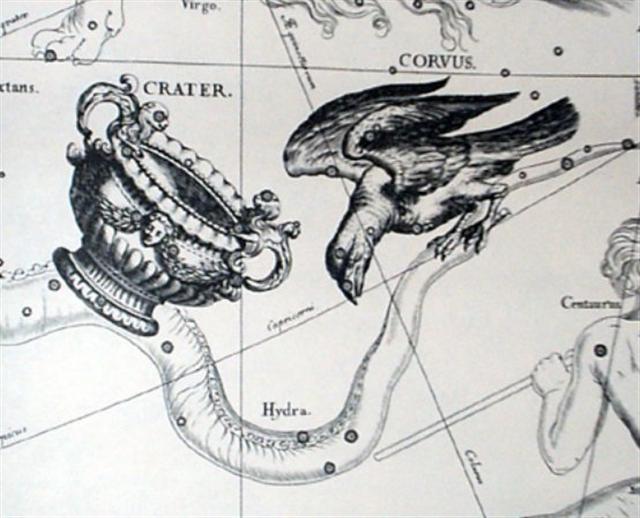







.jpg)
